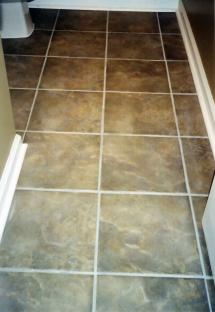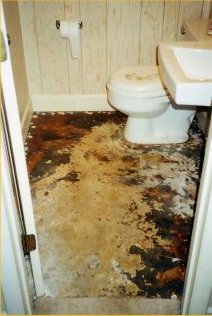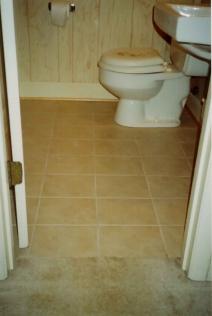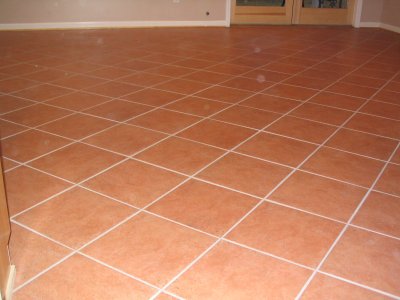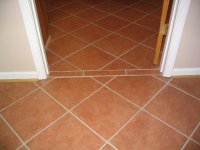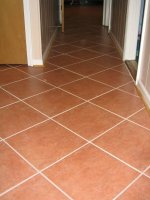|
|

|
||
 |
||

|
||

|
||
 |
|
Tile Tile adds an elegant touch to any room. Its durability is good for high-traffic areas, and its ease of cleaning makes tile a good choice for foyers and mudrooms. Floor preparation is critical to a long-lasting installation. If the tile is to be laid on concrete, the concrete must be clean of any residue or glue which would prevent good adhesion. For installations on wood subfloors, Durock (a sheet of concrete board) should be laid first to provide a solid foundation that will resist movement and cracking. Tile reflects sound, so tiled rooms will be louder than carpeted rooms. Also, tile can be cold to the touch on winter days, so consider using a small carpet on tiled bathrooms. (There are heating nets that can be installed under tile, which will keep them warm.) Once tile is installed, molding must generally be installed around the edges, and shoe molding is generally sufficient.
I removed the existing white linoleum from these bath and wet bar areas and tiled with grey slate tiles.
The carpet in this bathroom
had been removed, and the room was left looking like this. I tiled
the room with 8-by-10-inch tiles and completed the molding.
This tile was laid diagonally throughout a 1000-foot basement area. It stretches from this room through three other rooms, a hallway, and four closets. Notice the threshold pattern laid out below:
|
® Copyright 2008 Stephen Hall

